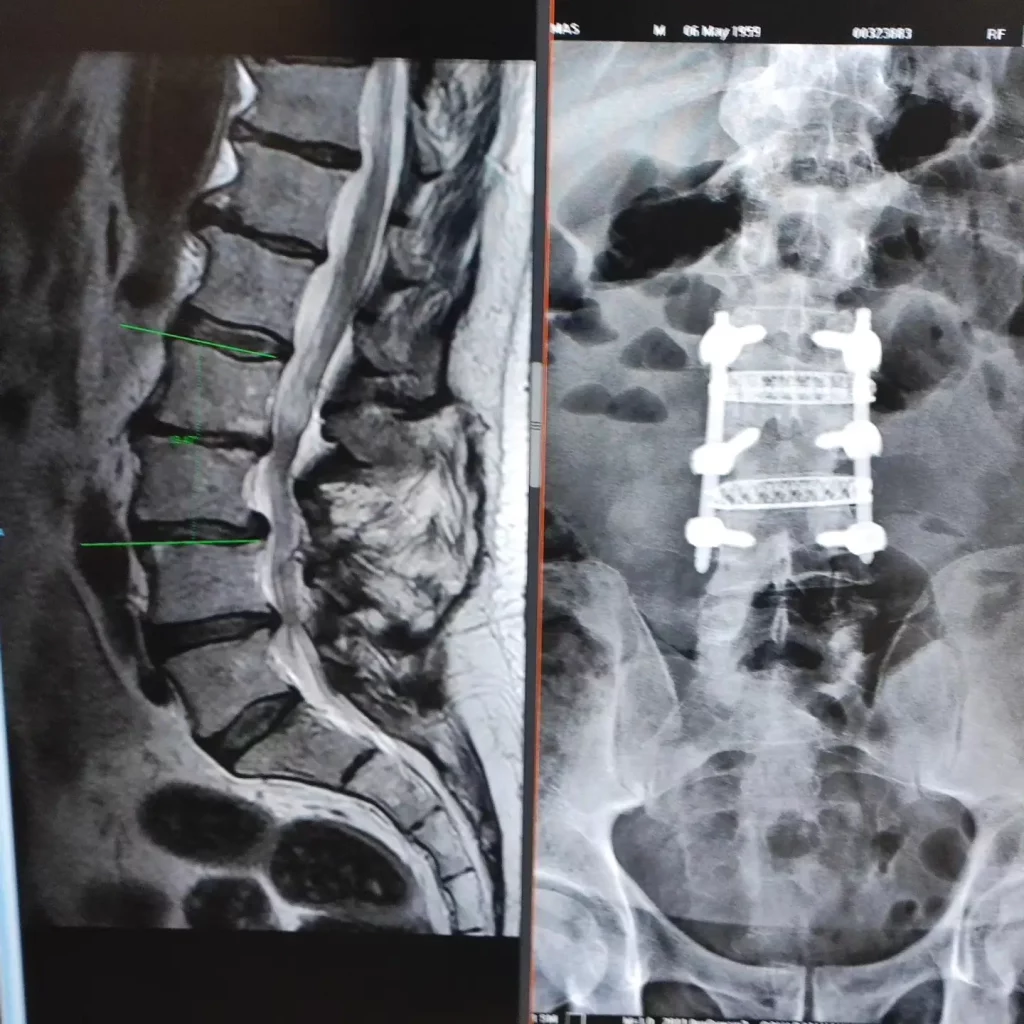XLIF Surgery: A Minimally Invasive and Precise Solution for Lumbar Spine Conditions
Extreme Lateral Interbody Fusion (XLIF) is a minimally invasive spine surgery technique designed to stabilize the lumbar spine and treat degenerative conditions, deformities, or vertebral instability. The procedure accesses the spine through the patient’s side (via a trans-psoas approach), avoiding large incisions and significantly reducing muscle damage compared to traditional surgery.
At Complex Spine Institute, Dr. Vicenç Gilete—a neurosurgeon with over 25 years of experience—has successfully performed XLIF in numerous complex cases, including patients with failed previous surgeries. He emphasizes, “Each case must be carefully evaluated to tailor the approach based on the patient’s anatomy and level of degeneration or instability.”

When Is XLIF Recommended?
XLIF is especially indicated for patients with:
- Degenerative disc disease (lumbar disc degeneration)
- Foraminal or central canal stenosis causing nerve compression
- Spondylolisthesis (slippage of one vertebra over another)
- Lumbar scoliosis
- Previous failed spinal surgeries that need revision
- Chronic low back pain not relieved by other treatments
Dr. Augusto Covaro, a specialist in revision and minimally invasive spine surgery, notes: “XLIF is particularly beneficial when we aim to avoid posterior structures. It greatly reduces bleeding, muscle disruption, and allows patients to return to daily life much faster.”
In patients with a previous surgical history, such as those treated at our center, this technique offers a new therapeutic opportunity, reducing the risk of fibrosis, adhesions, or complex reoperations at a later stage.
How Is XLIF Performed?
The patient lies on their side, and a small 3–5 cm incision is made along the flank. Surgeons access the spine through the psoas muscle using real-time neuromonitoring to avoid nerve injury. Once the intervertebral disc is reached, it is partially or fully removed, and a cage implant is inserted to restore spinal height and alignment. The cage is filled with bone graft or substitute to promote fusion.
At Complex Spine Institute, we use image-guided navigation to ensure precise and safe implant placement, enhancing surgical outcomes and reducing operation time. As Dr. Gilete explains, “Lateral access has transformed the way we treat complex deformities, especially in fragile patients or those with multi-level involvement. It allows for minimal blood loss, muscle preservation, and predictable results.”
Key Benefits of XLIF
Compared to traditional posterior spine surgery, XLIF offers significant advantages:
- Small, aesthetic incision with faster healing
- Muscle and ligament preservation
- Lower intraoperative blood loss
- Shorter surgical and hospitalization time
- Significantly less postoperative pain
- Faster recovery and return to daily activities
- High accuracy with 3D navigation and neuromonitoring
Dr. Covaro adds: “Our patients are often amazed that they can walk without pain just days after surgery—especially those who had struggled for years without relief. XLIF is often their turning point.”
What to Expect During Recovery
One of XLIF’s major advantages is its accelerated recovery time. Most patients are up and walking the same day or the next. Hospital discharge typically occurs within 24–48 hours, and return to normal activities is possible in 2–3 weeks.
Even in multi-level procedures, XLIF often allows for better recovery than traditional techniques, maintaining mobility and the spine’s natural curvature. Our physiotherapy and rehabilitation team designs a tailored recovery plan based on each patient’s age, condition, and activity level.
This reflects Complex Spine Institute’s holistic approach: cutting-edge technology, personalized care, and human connection at every step.
Are There Any Risks?
As with any surgery, XLIF carries some risks. However, due to its minimally invasive nature and when performed by an experienced team, the safety profile is excellent. Rare complications may include:
- Lumbar plexus or femoral nerve injury (minimized with neuromonitoring)
- Retroperitoneal hematoma
- Infection (rare with sterile technique and modern protocols)
- Temporary psoas muscle pain
- Pseudarthrosis (nonunion) if fusion does not occur properly
We apply strict prevention and follow-up protocols at Complex Spine Institute, using next-gen implants and advanced navigation to enhance precision and safety.
Special Cases: XLIF for Prior Surgeries or Rare Conditions
We specialize in complex spinal cases—patients who haven’t found answers elsewhere, or those with rare conditions such as connective tissue disorders (Ehlers-Danlos, Marfan), severe spinal deformities, or multiple prior surgeries.
XLIF offers a safer, more effective alternative in these scenarios by avoiding scarred or risky posterior approaches. Dr. Gilete has led numerous high-complexity procedures and sums it up: “Many of our patients come to us after being told there’s nothing more to do. We don’t offer standard solutions—we design specific answers for each spine. XLIF is often a key part of that answer.”
Is XLIF Right for You?
The indication for XLIF depends on a thorough clinical and radiological evaluation. At Complex Spine Institute, we offer both in-person and telemedicine consultations to review your imaging and medical history.
Our multidisciplinary team is highly experienced in lumbar spine surgery, minimally invasive techniques, and complex revisions. Our mission is to restore your quality of life with the highest scientific standards and the lowest possible risk.
Want to Know If You're a Candidate for XLIF?
Request a no-obligation consultation from anywhere in the world. Our international team speaks English, Spanish, French, German, and Catalan—and will guide you through every step if you choose to come to Barcelona.